Salmonella typhi (also known as Typhoid fever) are common in many developing countries, including Nigeria, where sewage and water treatment systems are poor. The effect of this S. typhi has been attributed to the loss of million lives per year and with life threatening complications like intestinal perforations and bleeding. However, little or no attribution of typhoid is made to vegetable production systems and processing. According to WHO, gardening practices constitute a causal or risk factor for S. typhi via vegetable contamination. Therefore, the objective of this seminar paper is to highlight this health promotion perspective. This paper advances need for educational awareness and health promotion within the public area in a Nigerian community on the practice of good personal hygiene to food handling and hygienic gardening. A brief link is made to open defecation free program as well as maternal and child health agenda.
Typhoid gastroenteritis, vegetable gardening, foodborne disease
Salmonella typhi (Typhoid fever) is a gram-negative rod bacterium in the Enterobacteriaceae family. It causes diarrheal disease and constitutes the most common illness resulting from unsafe food. It is attributed to be responsible for the loss of 33 million healthy lives per year and can be quite severe, especially in children [1]. The burden of the disease is quite high as shown in Table 1. The other most common Salmonella species are Salmonella bongori and Salmonella enterica [2]. Within these two Salmonella species, different serotypes have been identified and most are present in a wide range of hosts, including human beings. Typically, such serotypes cause gastroenteritis, which is often uncomplicated and does not need treatment. However, the disease can be severe in the young, the elderly, and patients with weakened immunity [2,3].
When there is a presence of diarrhoea and vomiting, an individual may say they are affected by the stomach flu. These symptoms often are due to a condition called gastroenteritis. With gastroenteritis (stomach flu), stomach and intestines are irritated and inflamed. Human being might experience stomach cramps, fever, nausea, dehydration, or a headache [4].
Salmonella infections include gastroenteritis (non-typhoid) and typhoid fever which in humans is generally contracted through the consumption of contaminated food of animal origin (mainly eggs, meat, poultry, and milk), although other foods, including green vegetables contaminated by manure, have been implicated in its transmission. Preventing Salmonella requires putting control measures at all stages of the food chain, from agricultural production to processing, manufacturing, and preparation of foods in both commercial establishments and at home [2].
Typhoid fever is an acute illness associated with fever caused by the Salmonella enterica serotype Typhi bacteria. Typhoid fever is contracted by ingesting contaminated food or water. People with acute illness can contaminate the surrounding water supply through stool, which contains a high concentration of bacteria [4]. Contamination of the water supply can, in turn, taint the food supply. Symptoms include poor appetite, headaches, generalized aches and pains, fever, and lethargy. Approximately 3%-5% of patients become carriers of this bacteria after the acute illness occurred [5].
Several issues like the environment, urban growth and rapid population growth that were not appropriately dealt with have received considerable attention since the Alma-Ata declaration [6], which hallmarked the Conference in 1978 [1]. It is known that infection can come from eating foods that are either cultivated or processed with polluted water [7]. However, a quick cursory survey will reveal there is a lack of alertness concerning how Salmonella infection may come from vegetables.
Health promotion enables people to increase control over their health. It covers a wide range of social and environmental interventions that are designed to benefit and protect individual people’s health and quality of life by addressing and preventing the root causes of ill health, not just focusing on treatment and cure [8]. There are three key elements towards health promotion [9], these include.
Good governance for health: For good governance towards health, for example, minimizing the transmission of infectious diseases is a core function of the public health law. Clearly defined legal powers are needed to respond to outbreaks of contagious and serious diseases at the national level. The appropriate exercise of legal powers will vary according to the seriousness of the disease, the means of transmission, and how easily the disease is transmitted. Some diseases are entirely preventable by vaccination (e.g., measles and polio), or by access to improved sanitation and clean drinking water (e.g., diarrhoeal, and parasitic diseases) [8].
Health literacy: People need to acquire the knowledge, skills, and information to make healthy choices, for example about the food they eat and healthcare services that they need. They could self-educate by taking courses, training, and/or joining support groups. Also, enough awareness could be created about healthy behaviours for the public through public service announcements, health fairs, mass social media campaigns, and newsletters [10].
Healthy Cities: Cities have a key role to play in promoting good health. Strong leadership and commitment at the municipal level are essential to healthy urban planning and to build up preventive measures in communities and primary health care facilities. From healthy cities evolve healthy countries and, ultimately, a healthier world [9].
Generally, infections are caused by microscopic organisms known as pathogens (such as bacteria, viruses, fungi, or parasites) that enter the body, multiply, and interfere with normal functions. Infectious diseases are a leading cause of illness and death around the world.
Yet, Salmonellosis is probably the commonest microbial infection attributed to foodborne disease outbreaks [11-13]. Hence this presentation will be focused on public health epidemiology of typhoid and non-typhoid Salmonellosis in terms of the 5-keys of growing vegetables to prevent Salmonella.
The agenda is to advance primary healthcare based on advice from the World Health Organization concerning hygienic practices in the cultivation and processing of vegetables [14]. Five keys to growing safer fruits and vegetables constitute factors that promote awareness of the links between the typhoid gastroenteritis and gardening practices in the discourse of human health. These keys will contribute to preventing foodborne diseases, which in turn would enhance decrease of microbial contamination.
The incidence of a disease is the number of new cases per population per unit time. For typhoid fever, the incidence is usually expressed as cases per 100 000 population per year. Typhoid fever incidence is often classified as low, medium, high, and, more recently, very high, corresponding to magnitude of incidence in the population per year [15]. For the burden of disease calculations, population-based active disease surveillance employs different methods [16]. Attempts to estimate the global burden of Salmonella typhi fever have remained hampered by the limited data as well as bias arising from methodology and incomplete documentation [15-17]. For instance, even the data on the safe disposal of children’s faeces in the Nigerian national survey is limited with incomplete responses or documentation (Figure 2).
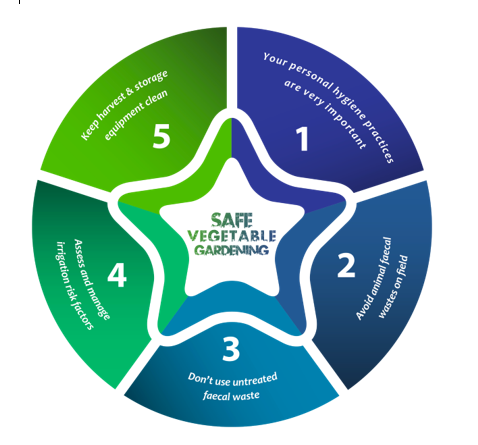
Figure 1: Graphic poster illustrating 5 keys on safe vegetable gardening to prevent salmonella infection [14].
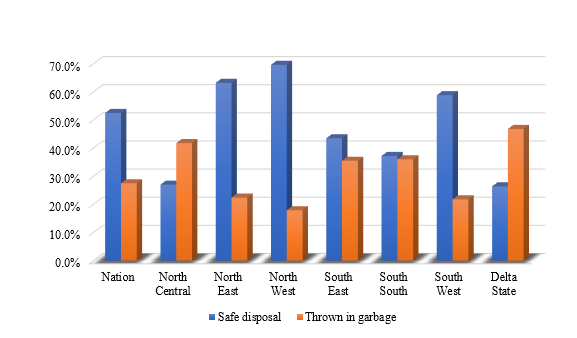
Figure 2: Distribution of children whose faeces are safely disposed of (Nigeria national survey) [18].
To further support the limitedness of data on this discourse, a recent report on global typhoid fever does not include Nigeria among the countries that contributed information. Yet, while the report indicates the trend of reducing incidence [17], there was a Nigerian reported account that is consistent with the suggestion of declining typhoid fever (Figure 3). Although, whether these indications of incidence rates are accurate is a different kettle of fish.
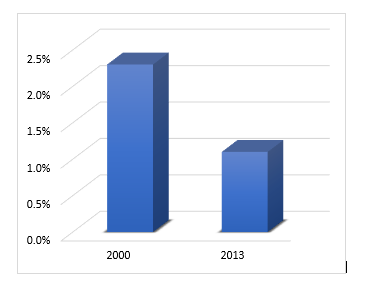
Figure 3: Indication of declining Salmonella typhoid fever in Nigeria [16].
Pertinently, the decline was attributed to improvement in household sanitation facilities and water supplies amongst others [15-17]. However, there is indication in Nigerian national survey data to that safe water supply and/or sanitation facilities is yet to reach 60% of the population (Figure 4).
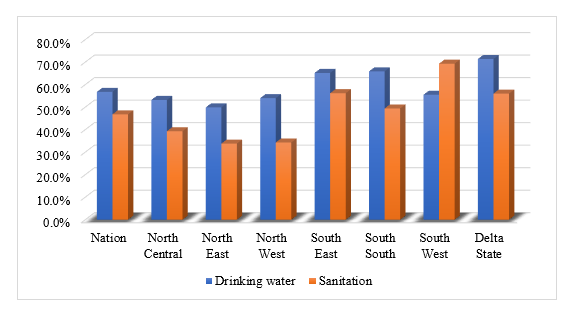
Figure 4: Percentages of the population with safe sanitation and/or water supply (Nigerian national survey).
Given the limitation of data, the attempt was made to evaluate the situation in the Obiaruku community. To achieve this, a laboratory record audit of the Widal test for Salmonella typhi was undertaken at Friends’ Medical Laboratory (FriendsLab). A 10 years’ record of 2010 to 2020 of all Widal tests were reviewed and counts of positive vs. negative were counted. Although, it is noteworthy that widal test is becoming an obsolete method for the clinical diagnosis of S. typhi as there are more specific and sensitive lab methods; the use of the test is still very common in Nigeria.
The results show that out of 40,842 tests performed, 16,206 (39%) were positive (Table 2). Evaluation of yearly trend indicates no less than 27% positive test rate and as much as 49% (Figure 5). At least, the fluctuation observed does not in any way imply reduction. Instead, it is more likely to corroborate with the high percentage of the population estimated to be still practicing unsafe faecal disposal i.e., open defecation (Figure 2).
Table 1: Brief statistics of the burden of foodborne disease.
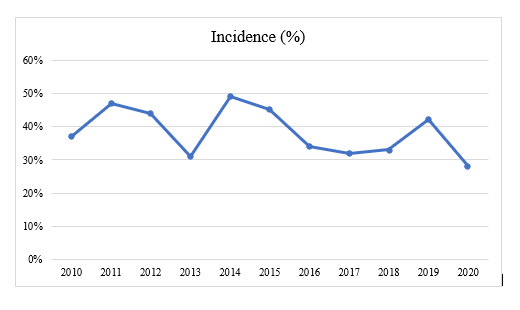
Figure 5: Fluctuating incidence of positive test results from 2010 to 2020.
Intake of vegetables that is not properly processed could lead to microbial contamination. To promote health while consuming vegetable, the World Health Organization provided the five keys to promote health and growing safer vegetables [14] – viz:
The first Key - involves the practice of good personal hygiene: A very good personal hygiene involves taking good care of the body which in turn helps to prevent the transfer of dangerous microorganisms to vegetables and decrease the risk of foodborne diseases. Microorganisms can be found anywhere including human and animal faecal wastes and these can be transferred in infected wounds, human and animal faecal waste, and can be transferred to vegetables by hands, clothing, and other surfaces of which can be corrected by good personal hygiene.
One can practice good personal hygiene by washing and drying hands with a clean, dry towel after toileting, diapering a child and contact with animals, by changing clothes and bathing regularly, by avoiding having to work in the fields when sick, by covering cuts, lesions, and wounds, by using a toilet or latrine to urinate and defaecate and by trimming and cleaning fingernails regularly.
The second Key –involves protecting fields from animal faecal contamination: Trash, food, and water in and around growing fields attract animals, including wild birds to the fields which need to be protected because dangerous microorganisms in animal faeces can contaminate crops directly when animal defaecate in fields - or indirectly when rainwater becomes contaminated with dangerous microorganisms and runs downhill into the growing fields [18].
One can protect fields from animal faecal contamination by keeping animals from roaming in growing fields, by housing livestock downhill from growing fields in a fenced area, also by removing trash from in and around growing fields [19]. One could also place items that look scary or make noise (such as a scarecrow or windmill) around the outside of crops to keep animals out of the growing fields. Protect fields by putting shiny ribbons around the growing fields to scare away birds and by keeping animals out of the growing fields, especially close to harvest time.
The third Key –involves using treated faecal waste: Microorganisms that are dangerous in human and animal faecal waste can survive for a long period and contaminate vegetables. Faecal waste like manure and human excreta must be treated to kill the microorganisms and can be effectively used and saved as fertilizer.
One method for treating human excreta is to prolong storage (without the addition of new material) for up to two years to ensure the death of dangerous microorganisms (Manure aging). The manure is simply stacked in a pile (away from the growing field and water sources) and left for a long period with no further additions of fresh manure. Dangerous microorganisms die due to natural heating. It is advisable to apply treated faecal waste to fields before planting and maximize the time between the application of treated faecal waste and harvest.
The fourth Key –involves evaluating and managing risks of irrigation water: Water that is used for irrigation of vegetables must not introduce dangerous microorganisms because the dangerous microorganisms in the faecal waste can contaminate water and then be transferred to soil and crops via the irrigation process. Water is very much needed for human, animal, and agricultural activities, and the risk of microbial contamination of different water sources varies.
One can evaluate and manage risks from Irrigation water by identifying all water sources relevant to the growing field, by being aware of the risk of microbial contamination of water, by protecting water from faecal contamination (build a fence around water sources to prevent intrusion of animals), by applying control measures when using water contaminated or of unknown quality, by not washing soiled work clothes and diapers in water used for irrigation, by maximizing the interval between irrigation and harvest (at least one month when wastewater is used) and by minimizing the direct contact of irrigation water with the edible parts of fruits and vegetables by avoiding the use of overhead sprinklers or intentional flooding.
The fifth Key –involves keeping harvest and storage equipment clean and dry: When dirty/contaminated hands, soil, harvest equipment, and storage facilities come in contact with fruits and vegetables, they can become contaminated with dangerous microorganisms. Wet or damp surfaces promote the growth of dangerous microorganisms.
One can keep harvest and storage equipment clean and dry by removing visible dirt and debris from fruits and vegetables in the field, by washing harvest and storage equipment with clean water and properly dried before use, by keeping containers off the ground before, during, and after harvesting, by cooling fruits and vegetables quickly by limiting the access of animals, children and other non-workers to the harvest and storage areas and by cleaning areas used for cleaning and sorting fruits and vegetables at the end of each day.
It is known that open defecation is a public health menace including among maternal and child health space. Open defecation is implicated in maternal mortality. Typhoid is 3rd leading factor influencing maternal mortality & morbidity MCH; and may be prevented through hygienic vegetable production/handling [20-24]. What has had little, or no emphasis is how vegetables production is linked with maternal and child health via open defecation or poor sanitation practices. However, it is hypothesized that ‘hygienic vegetables production & handling constitutes a potential option in preventive medicine management of MCH’.
In addition to the hypothesis, it is also strongly recommended to start public health awareness and flyer tool is hereby recommended. Figure 6 is recommended graphic poster as possible pictorial tool for health promotion. That is, in practicing good personal hygiene, one should extend it to the consciousness of vegetable contamination, and the gardening environment. For public health officers involved in the prevention of S.typhi, the figure highlights the need to consider the perspective of how gardening practices constitute a causal or risk factor via vegetable contamination [25]. Educational awareness and health promotion flyers to be provided within the public location in a Nigerian community.
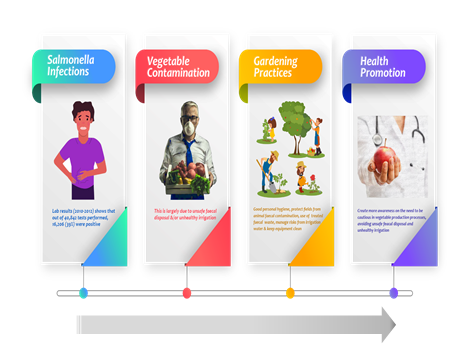
Figure 6: Graphic poster for health promotion – Graphical indication of educational focal points.
Generally, infections are caused by microscopic organisms known as pathogens (such as bacteria, viruses, fungi, or parasites) that enter the body, multiply, and interfere with normal functions. Typhoid fever is an acute illness associated with fever caused by the Salmonella enterica serotype typhi bacteria. Typhoid fever is contracted by drinking or eating the bacteria in contaminated food or water. In Nigeria, when someone tests positive for widal (typhoid fever), the first thought that comes to mind is that he or she must have drunk contaminated water. No one thinks of vegetable production and processing as a source of typhoid fever. Therefore, this presentation has focused on public health epidemiology of typhoid Salmonellosis in terms of the 5-keys of growing vegetables hygienically to prevent Salmonella. The significance lies in need to extend health promotion on an endemic and contemporary infectious disease that begs for further infection control measures.
This was a piece of seminar presentations on contemporary public health issues done as part of academic exercise by IIC. Graphic posters were also done by IIC. First review was by EUN. Second review by TED. Third review and articulation were done by OCC and EUN.
- World Health Organization (2020) Declaration of Alma-Ata: International Conference on Primary Health Care.
- Li H, Wang H, D'Aoust JY (2012) Salmonella Species. Food Microbiol 223-261.
- World Health Organization (2018) Salmonella (non-typhoidal).
- Kapikian AZ (1993) Viral Gastroenteritis. JAMA 269: 627-630. [Crossref]
- Carol D (2019) Typhoid Fever.
- Rahman M, Chowdhury S (2018) Primary care: The challenges of a changing world.
- Senyk S (2020) India: The problem of open defecation.
- WHO (2021) World Health Organization: Safer water, better health.
- World Health Organization (2021) Health promotion.
- Randolph W, Viswanath K (2004) Lessons learned from public health mass media campaigns: marketing health in a crowded media world. Annual Rev Public Health 25: 419-437. [Crossref]
- Hanning IB, Nutt JD, Ricke SC (2009) Salmonellosis outbreaks in the United States due to fresh produce: sources and potential intervention measures. Foodborne Pathog Dis 6: 635-648. [Crossref]
- Fatica MK, Schneider KR (2011) Salmonella and produce: survival in the plant environment and implications in food safety. Virulence 2: 573-579. [Crossref]
- Kozak GK, MacDonald D, Landry L, Farber JM (2013) Foodborne outbreaks in Canada linked to produce: 2001 through 2009. J Food Prot 76: 173-183. [Crossref]
- World health Organization (2012) Five keys to growing safer fruits and vegetables: Promoting health by decreasing microbial contamination.
- Crump JA (2019) Progress in typhoid fever epidemiology. Clin Infect Dis 68: S4-s9. [Crossref]
- Akinyemi KO, Oyefolu AOB, Mutiu WB, Iwalokun BA, Ayeni ES, et al. (2018) Typhoid fever: Tracking the trend in Nigeria. Am J Trop Med Hyg 99: 41-47. [Crossref]
- Marchello CS, Hong CY, Crump JA (2019) Global typhoid fever Incidence: A systematic review and meta-analysis. Clin Infect Dis 68: S105-s116. [Crossref]
- National Bureau of Statistic (2018) National Nutrition and Health Survey (NNHS) 2018: Report on the nutrition and health situation of Nigeria.
- Penakalapati G, Swarthout J, Delahoy MJ, McAliley L, Wodnik B, et al. (2017) Exposure to animal feces and human health: A systematic review and proposed research priorities. Environ Sci Technol 51: 11537-11552. [Crossref]
- Roser M, Ritchie H (2021) Maternal mortality.
- Azuh DE, Azuh AE, Iweala EJ, Adeloye D, Akanbi M, et al. (2017) Factors influencing maternal mortality among rural communities in southwestern Nigeria. Int J Womens Health 9: 179-188. [Crossref]
- Balogun M, Banke-Thomas A, Sekoni A, Boateng GO, Yesufu V, et al. (2021) Challenges in access and satisfaction with reproductive, maternal, newborn and child health services in Nigeria during the COVID-19 pandemic: A cross-sectional survey. PLoS One 16: e0251382-e0251382. [Crossref]
- Anjorin AAA, Babalola SR, Iyiade OP (2020) Influenza, malaria parasitemia, and typhoid fever coinfection in children: Seroepidemiological investigation in four Health-care Centers in Lagos, Nigeria. J Pan Afr Thorac Soc 1.
- Saleem M, Burdett T, Heaslip V (2019) Health and social impacts of open defecation on women: a systematic review. BMC Public Health 19: 158. [Crossref]
- Atidégla SC, Huat J, Agbossou EK, Saint-Macary H, Glèlè Kakai R (2016) Vegetable Contamination by the Fecal Bacteria of Poultry Manure: Case Study of Gardening Sites in Southern Benin. Int J Food Sci 2016: 4767453. [Crossref]
